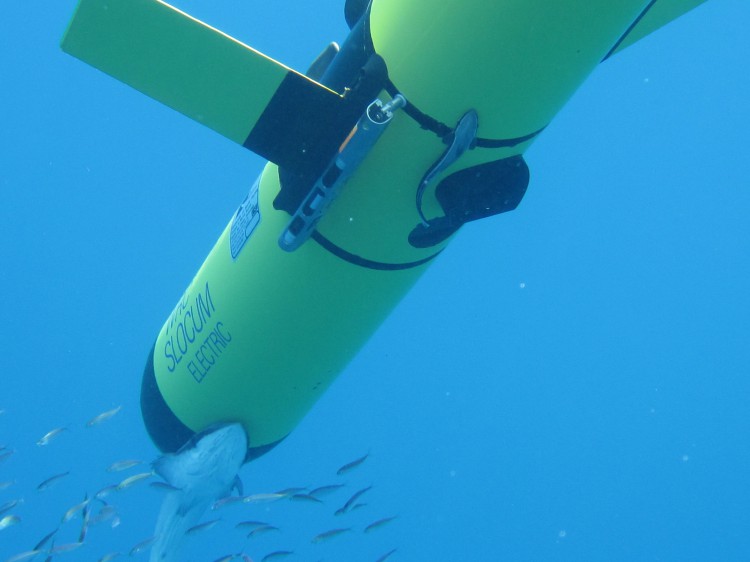NCCOS is supporting the rapid deployment of self-propelled underwater robotic gliders to map an emerging red tide bloom in the Gulf of Mexico. The bloom of Karenia brevis, Florida Red Tide, was detected by an NCCOS-sponsored new modeling tool on July 23 and the Florida Fish and Wildlife Commission (FWC) promptly issued a public red tide notice alerting the public of the bloom in the northeast Gulf of Mexico about 40 miles offshore of Hernando County.

Through the NCCOS Event Response Program, two gliders will be deployed in tandem by the University of South Florida College of Marine Science and Mote Marine Laboratory. Each glider has different sensors, depth ranges, and mission capabilities, which will provide a rapid and comprehensive assessment of bloom boundaries and depth for use in both validating model assessments and refining model predictions on bloom properties and future movements.
Red tide blooms produce toxins that can contaminate edible shellfish and cause respiratory illness when aerosolized toxins are inhaled near beaches. The economic losses to fisheries and tourism exceed $25 million annually in Florida alone, with higher costs if human health issues are considered. NCCOS event response support will provide information to the FWC to improve the state’s response and aid natural resource and public health managers.
For more information, contact Quay.Dorth@noaa.gov.
